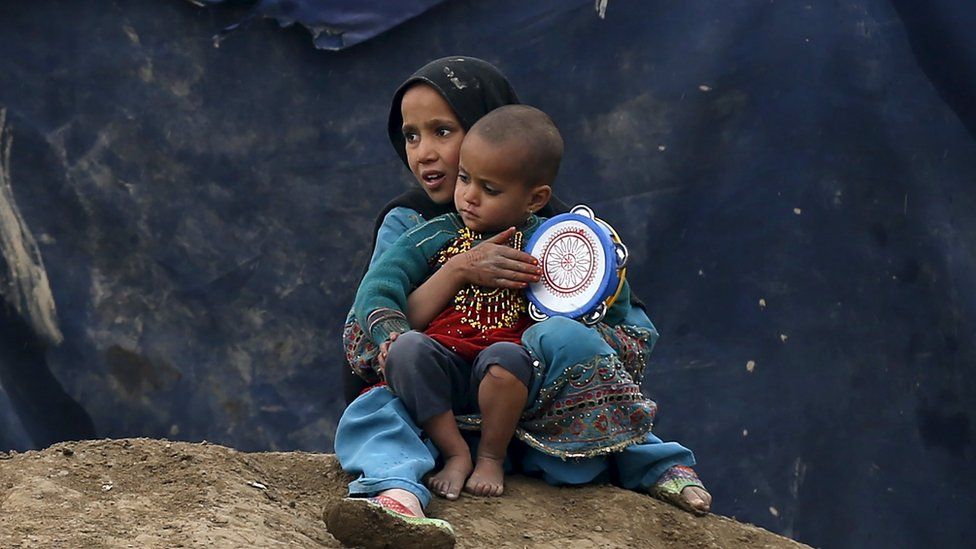Afghanistan: Number of internally displaced doubles to 1.2m, says Amnesty
- Published

The number of Afghans displaced within their country has more than doubled to 1.2m over the past three years, rights group Amnesty says.
Conditions for internally displaced people have "dramatically worsened" and many lack adequate shelter, food, water and healthcare, the organisation says.
It called on the Afghan authorities and the international community to ensure their most urgent needs were met.
Last year 11,000 people were killed or wounded in conflict in the country.
"Even after fleeing their homes to seek safety, increasing numbers of Afghans are languishing in appalling conditions in their own country, and fighting for their survival with no end in sight," said Amnesty's South Asia Director Champa Patel.
In 2013, there were 500,000 internally displaced people (IDPs) in Afghanistan, the organisation said. However those numbers have risen sharply since the withdrawal of most Western forces in 2014.
Correspondents say the Taliban has gained in strength and now controls sizeable parts of the country. At the same time, international aid to Afghanistan has dwindled as other crises elsewhere attract greater attention.
Tens of thousands of Afghans have fled abroad in search of a better life.
Meanwhile government corruption, lack of skills and a lack of international interest mean an IDP policy launched in 2014 that guaranteed access to food, water and education has seen almost no implementation, Amnesty says.
Instead, many IDPs live under the threat of being forcibly evicted from both private and government accommodation, it says.
Last June, armed men and police officers opened fire on IDPs demonstrating against an attempted forced eviction at the Chaman-e-Babrak camp in Kabul, killing two people and wounding 10, the new report says.
IDPs also face myriad other challenges, Amnesty says, including:
- Having to seek private medical treatment that they cannot afford because mobile clinics run by the authorities and NGOs are only occasionally available
- Being forced to make long daily trips to gather water and struggling to find one daily meal
- Children having to work to support their families instead of going to school
Amnesty has urged the Afghan government to make implementing its IDP policy a priority.
It also wants international donors to provide more funding and expertise.
Earlier this year the UN asked for $393m (£269m) in humanitarian funding for Afghanistan, but by May less than a quarter of this amount was forthcoming, Amnesty said.
Some 2.6m Afghan citizens now live as refugees outside the country's borders following decades of war.
However President Ashraf Ghani has called on Afghans to stop fleeing and instead stay and rebuild their shattered nation.
In figures: Afghanistan departures
- For three decades, Afghanistan was main source of refugees globally until 2014 when it was overtaken by Syria
- More than one million people from Afghanistan, Iraq and Syria crossed into Greece in 2015
- Afghan migrants made up an estimated 20% of all arrivals in Europe by boat in 2015
- 154,000 Afghan asylum seekers arrived in Germany alone in 2015
- Published31 March 2016
- Published12 August 2022
- Published5 January 2016